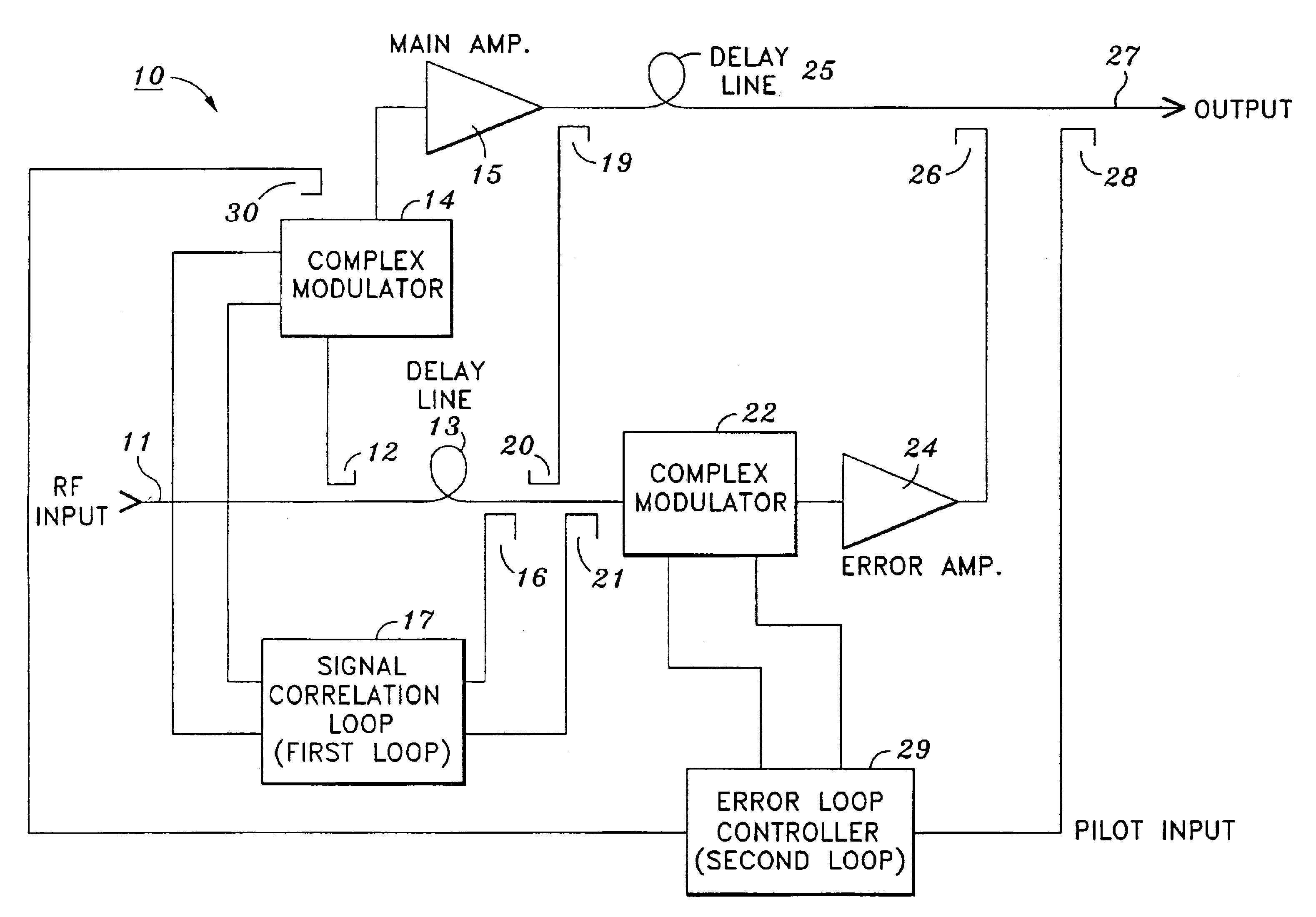Feed-forward amplifier loop control utilizing if signal processing
a signal processing and loop control technology, applied in amplifiers, amplifiers with semiconductor devices/discharge tubes, amplifier modifications to reduce noise influence, etc., can solve problems such as poor cancellation, pilot leakage out of amplifiers, and intermodulation of pilot and desired signal, so as to achieve easy control or shield
- Summary
- Abstract
- Description
- Claims
- Application Information
AI Technical Summary
Benefits of technology
Problems solved by technology
Method used
Image
Examples
Embodiment Construction
[0025]FIG. 1 shows a feed-forward amplifier 10 according to the invention. As shown in FIG. 1, RF input signal 11 is sampled by directional coupler 12 at approximately 10 dB down such that substantially all (approximately 90%) of the RF signal continues along delay line 13. The signal sampled by directional coupler 12 is fed to a complex (i.e., real and imaginary parts) modulator 14 and, following injection of the pilot signal from directional coupler 30, the signal is amplified at main amplifier 15. As for the RF input, it continues to propagate through delay line 13 where it is sampled by directional coupler 16 where it is fed as a reference to first loop 17 which is hereinafter referred to as a signal cancellation loop. Meanwhile, the output of main amplifier 15 is sampled by a sampling directional coupler 19 and coupled back into the RF input and subtracted (through appropriate phase coupling) by directional coupler 20. The signal from the main amplifier tends to cancel the RF i...
PUM
 Login to View More
Login to View More Abstract
Description
Claims
Application Information
 Login to View More
Login to View More - R&D
- Intellectual Property
- Life Sciences
- Materials
- Tech Scout
- Unparalleled Data Quality
- Higher Quality Content
- 60% Fewer Hallucinations
Browse by: Latest US Patents, China's latest patents, Technical Efficacy Thesaurus, Application Domain, Technology Topic, Popular Technical Reports.
© 2025 PatSnap. All rights reserved.Legal|Privacy policy|Modern Slavery Act Transparency Statement|Sitemap|About US| Contact US: help@patsnap.com



